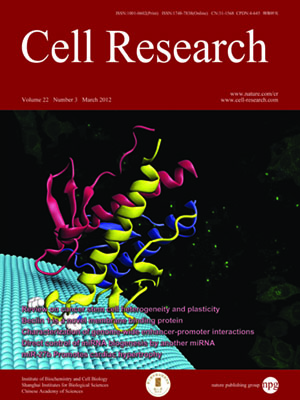
Volume 22, No 3, Mar 2012
ISSN: 1001-0602
EISSN: 1748-7838 2018
impact factor 17.848*
(Clarivate Analytics, 2019)
Volume 22 Issue 3, March 2012: 565-580
ORIGINAL ARTICLES
A network-based gene-weighting approach for pathway analysis
Zhaoyuan Fang1, Weidong Tian2 and Hongbin Ji1
1State Key Laboratory of Cell Biology, Institute of Biochemistry and Cell Biology, Shanghai Institutes for Biological Sciences (SIBS), Chinese Academy of Sciences, Shanghai 200031, China
2School of Life Sciences, Institute of Biostatistics, Fudan University, Shanghai 200433, China
Correspondence: Hongbin Ji, Weidong Tian,(hbji@sibs.ac.cn; weidong.tian@fudan.edu.cn)
Classical algorithms aiming at identifying biological pathways significantly related to studying conditions frequently reduced pathways to gene sets, with an obvious ignorance of the constitutive non-equivalence of various genes within a defined pathway. We here designed a network-based method to determine such non-equivalence in terms of gene weights. The gene weights determined are biologically consistent and robust to network perturbations. By integrating the gene weights into the classical gene set analysis, with a subsequent correction for the “over-counting” bias associated with multi-subunit proteins, we have developed a novel gene-weighed pathway analysis approach, as implemented in an R package called “Gene Associaqtion Network-based Pathway Analysis” (GANPA). Through analysis of several microarray datasets, including the p53 dataset, asthma dataset and three breast cancer datasets, we demonstrated that our approach is biologically reliable and reproducible, and therefore helpful for microarray data interpretation and hypothesis generation.
Cell Research (2012) 22:565-580. doi:10.1038/cr.2011.149; published online 6 September 2011
FULL TEXT | PDF
Browse 2254


